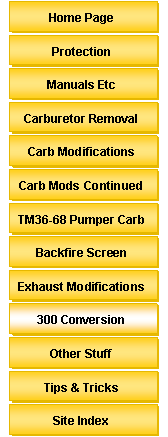
|
The engine in the KLX250S is basically identical to the KLX300 with the exception of the piston and cylinder.
If you are looking for a more low and mid range power and torque, you might want to consider increasing your stock KLX250S engine displacement from 249cc to 292cc (300cc kit)
This requires the KLX300 292cc cylinder and which replaces the 250 cylinder and purchase the piston, rings, piston pin, pin clips, and gaskets
The install procedure involves draining all the fluids including oil and coolant, removing the seat, side panels, shrouds, gas tank, exhaust pipe, carburetor, valve cover, cams, cylinder head and finally the cylinder will come off then. Then remove the old piston and pin.
Before reinstallation be sure and clean all gasket surfaces well. They should be clean and dry when the new gaskets are installed. Then, as the Kawasaki service manual says: "Assembly is the reverse of removal."
Here’s the parts you’ll need for this conversion
11005-1983 Cylinder-Engine 13001-1463 Piston-Engine 13002-1109 Pin-Piston 13008-1071 Ring-Set-Piston-Std 92033-1054 Ring-Snap (2 required) 11060-1740 Gasket, Cylinder Base 11004-1314 Head Gasket 11060-1318 Gasket, Head Cover (if you’re careful you can reuse this gasket and save some money) |


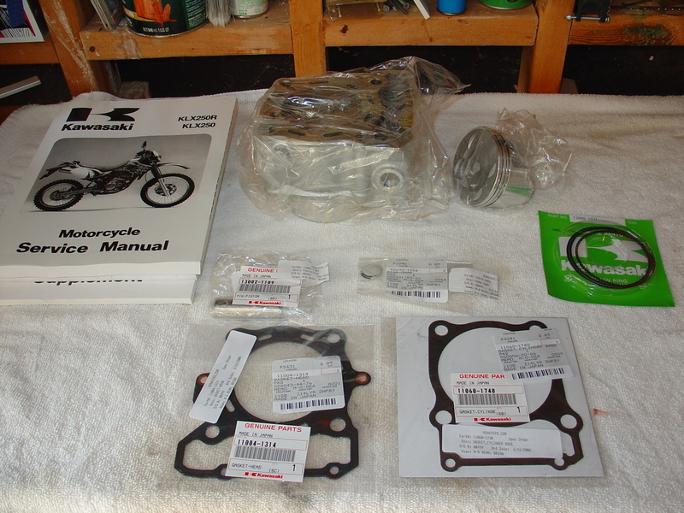

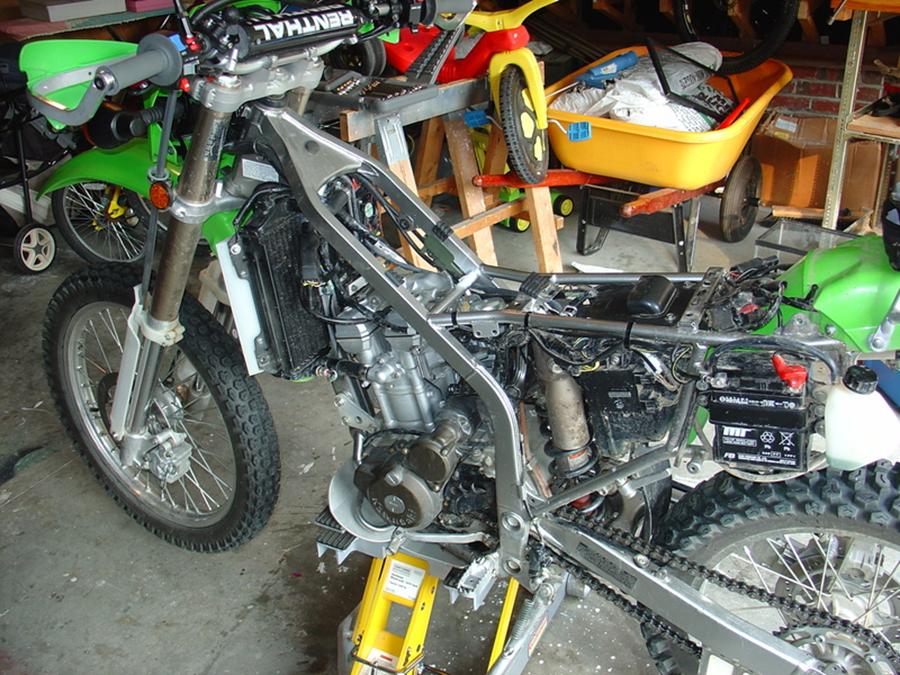

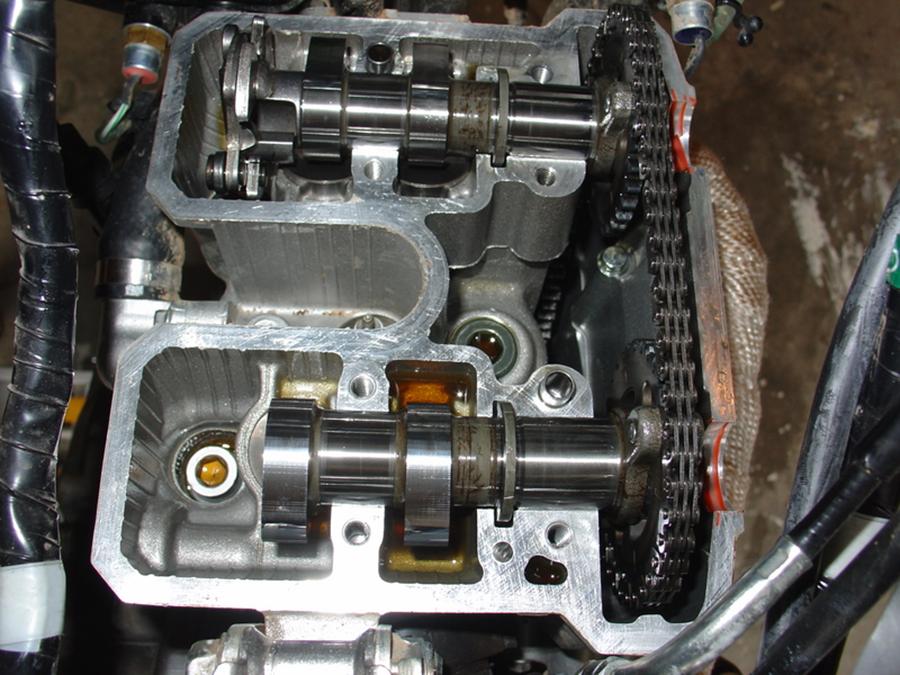

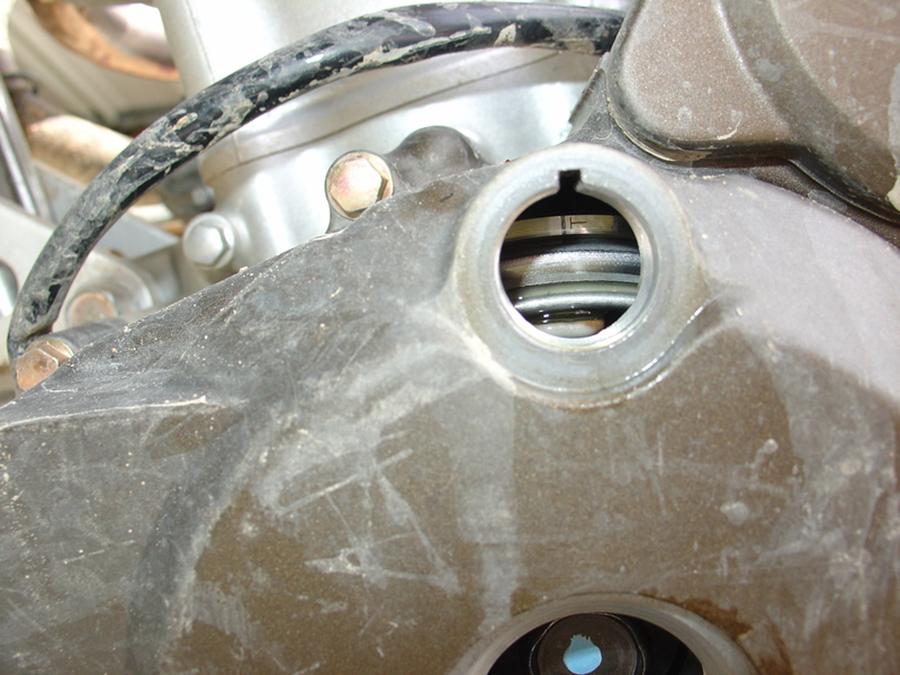
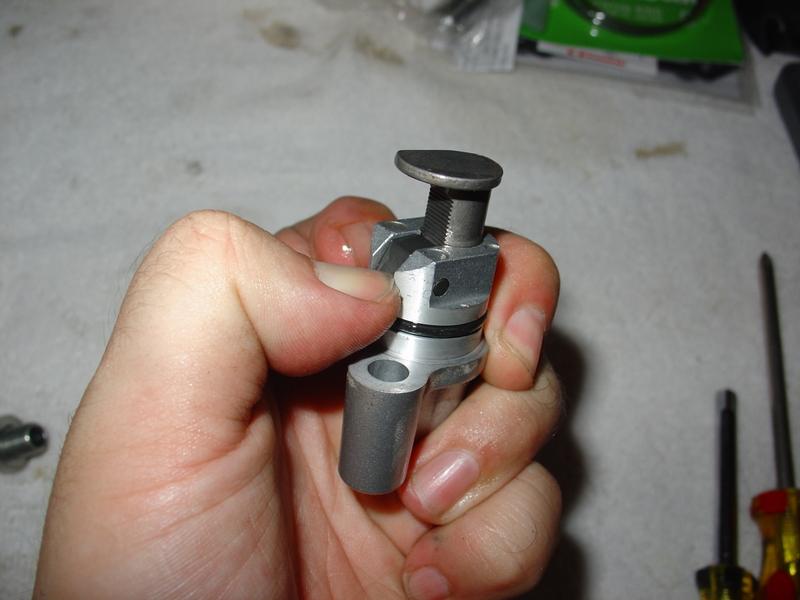

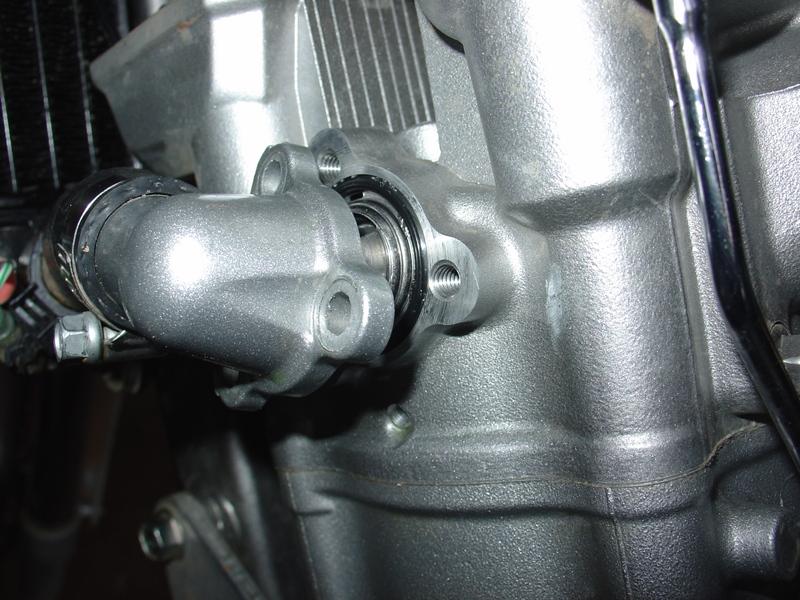

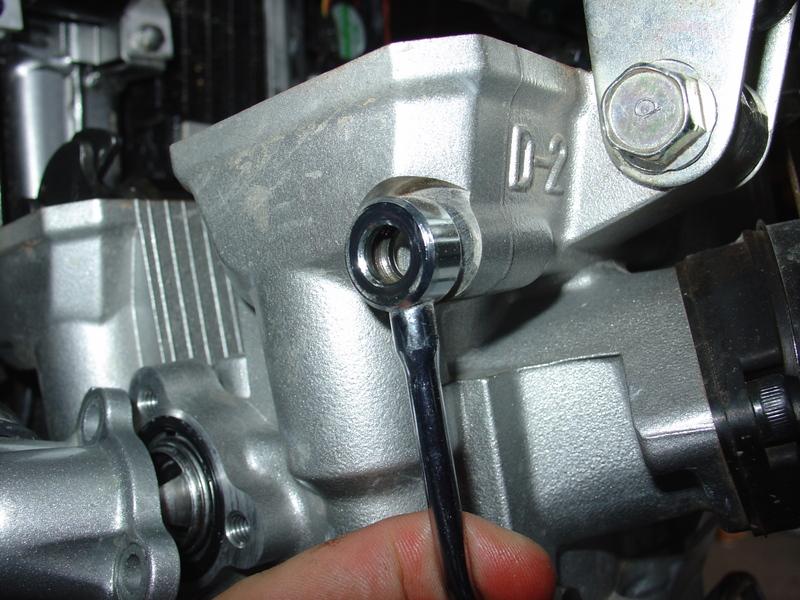


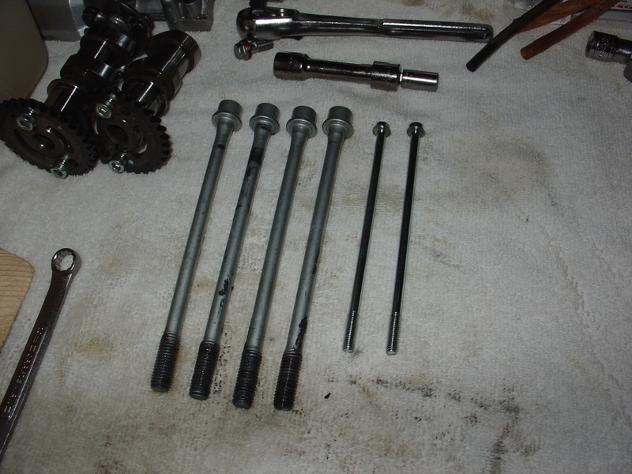



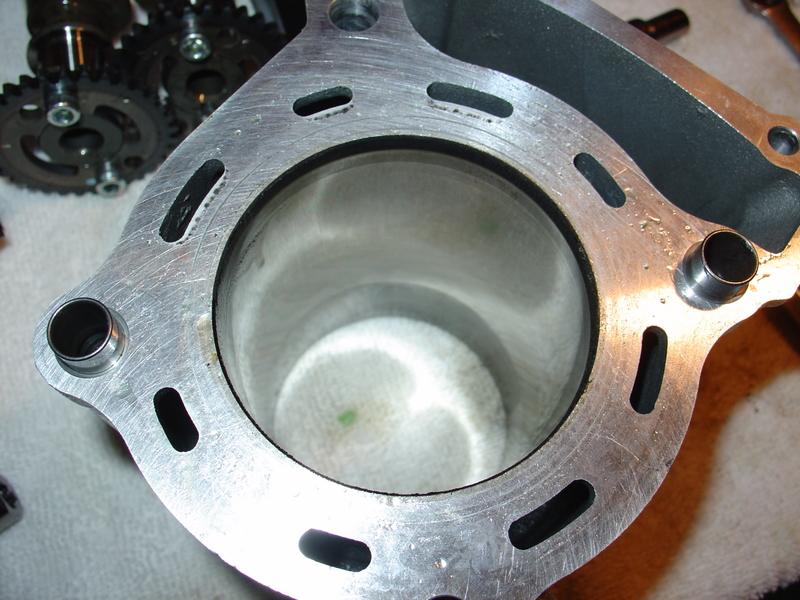
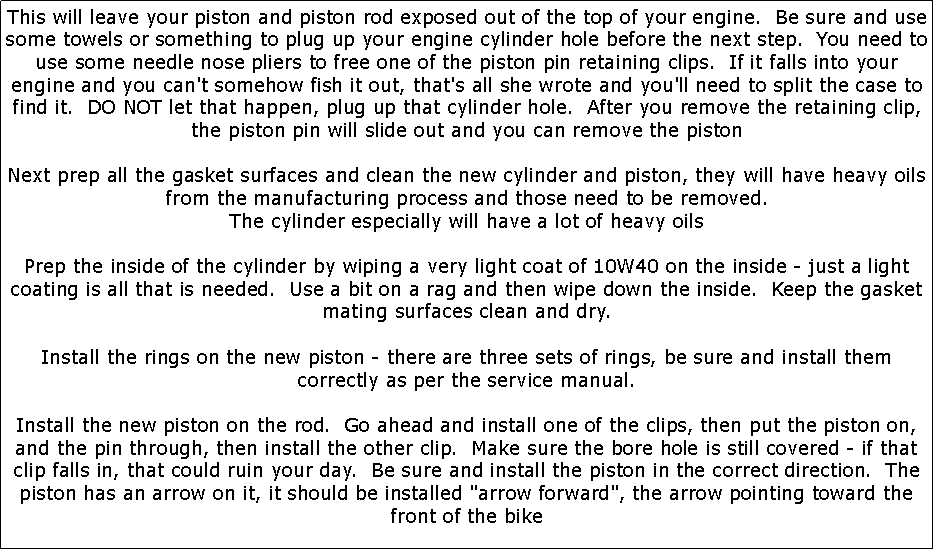

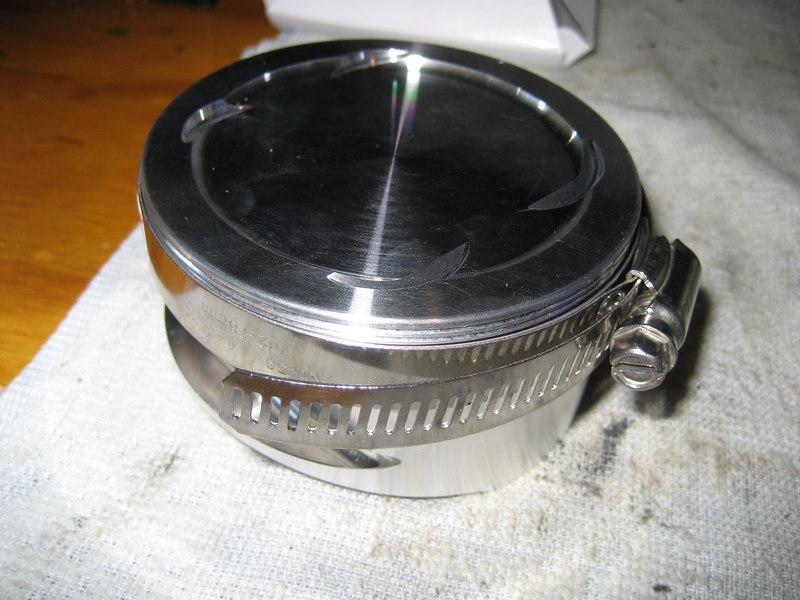

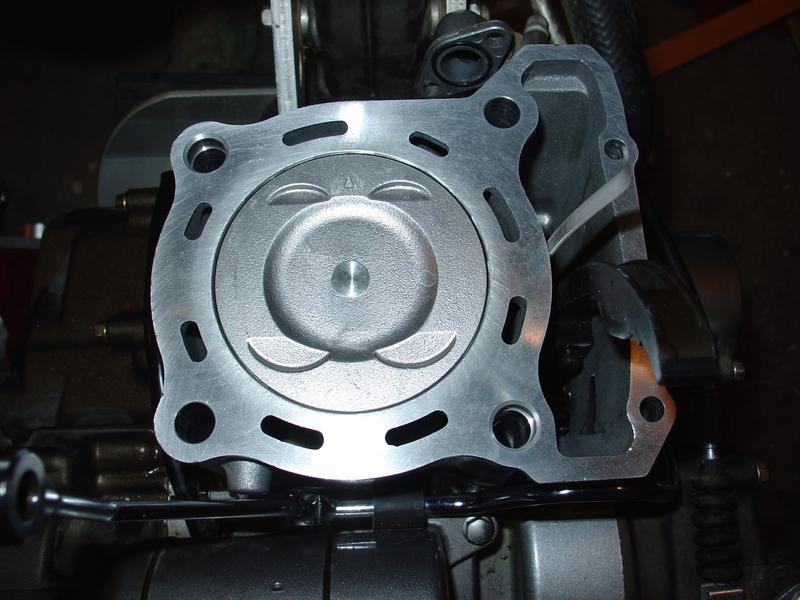
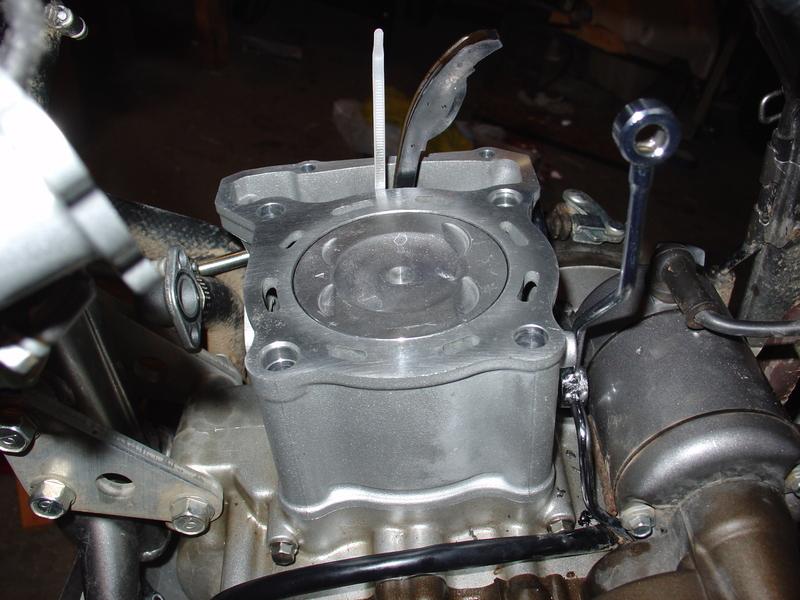
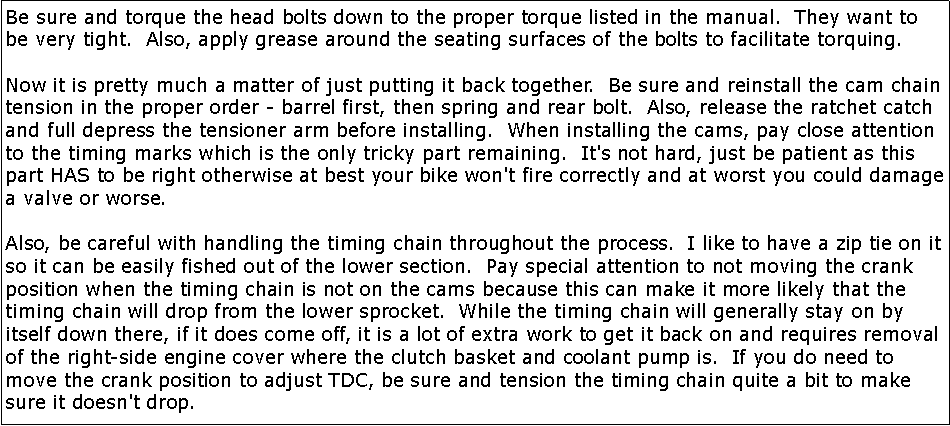
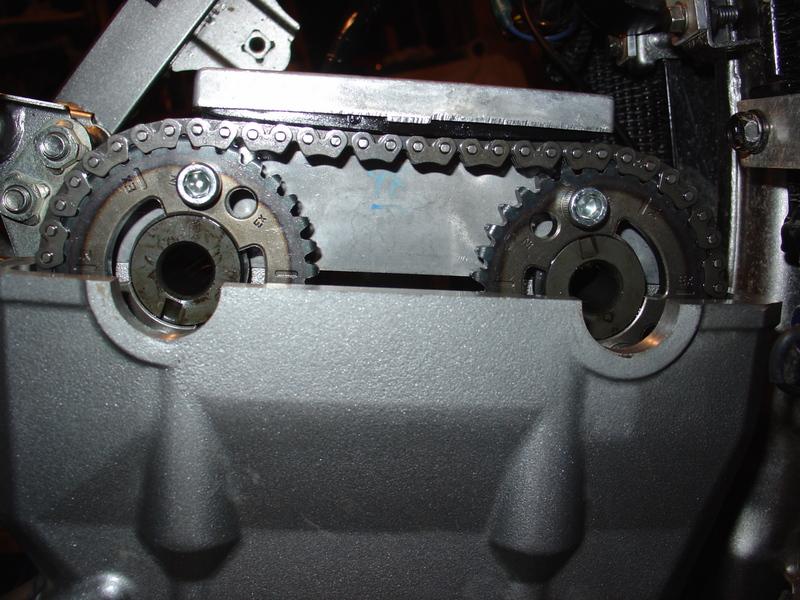

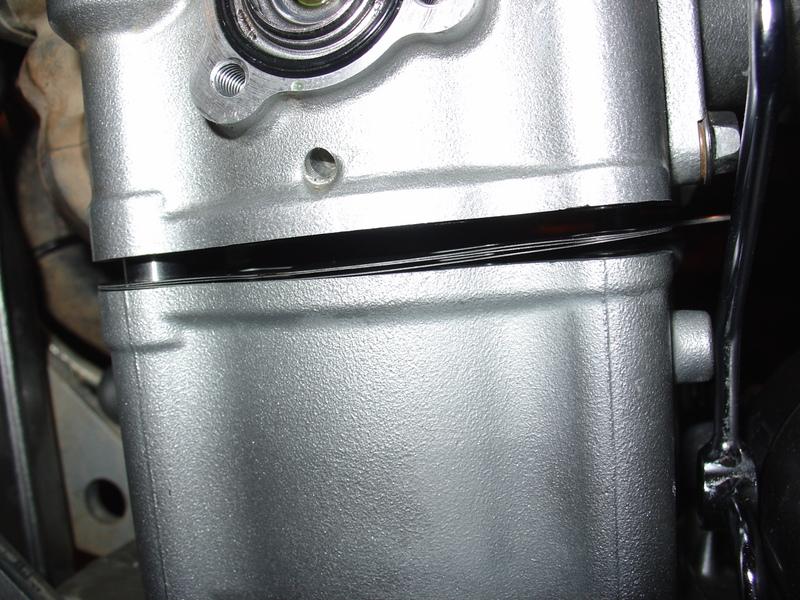
|
Tip Before installing the cylinder head put the camshafts back in the head and torque the bolts You can then check the valve clearances and make any necessary adjustments. Even if they are in tolerance record the clearances for future reference. |